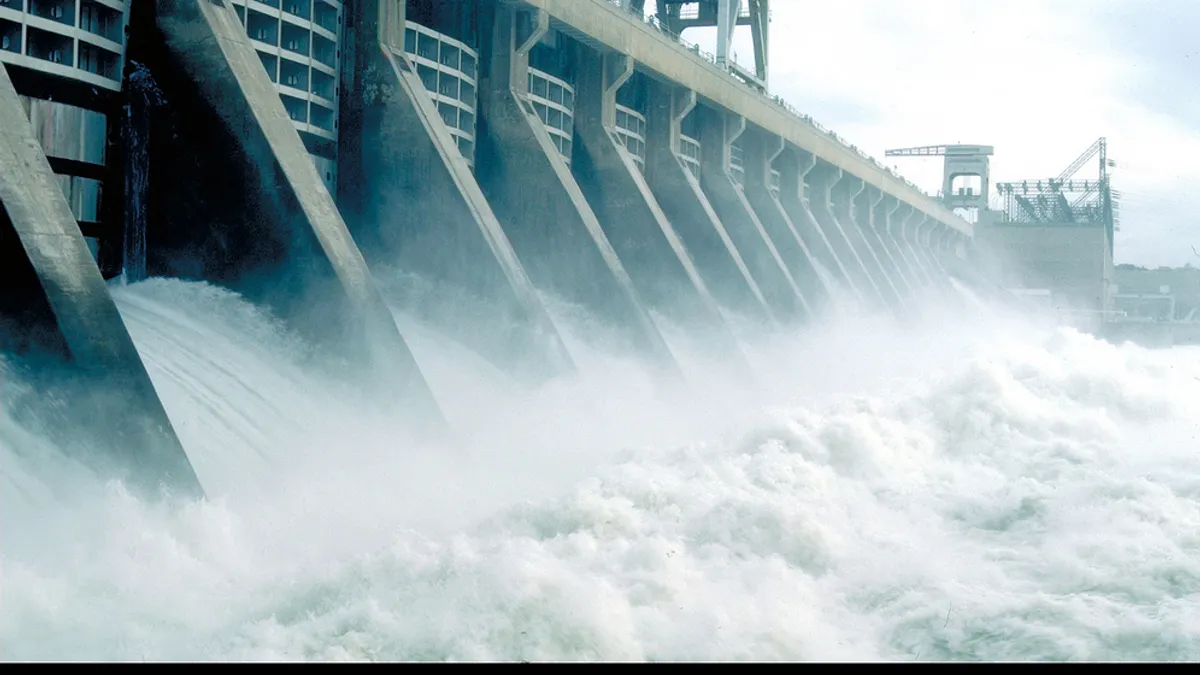Dive Brief:
- Duke Energy wants to increase the energy storage capacity of its Bad Creek Pumped Storage Hydroelectric Station in South Carolina by 200 MW, though the timing of the upgrade remains uncertain.
- The utility last week celebrated the 25th anniversary of the plant, which is built inside of a mountain in northwest South Carolina.
- Last month, federal regulators issued a new 30-year operating license for Duke's Keowee-Toxaway Hydroelectric Project, which generates more than 850 MW.
Dive Insight:
Stories about Duke's Bad Creek plant tend to focus on its unique design. The utility's own Illumination news site calls it "the marvel in the mountain" and acknowledges it looks like a movie villain's underground lair. The Greenville News calls it "an engineering marvel."
Built 600 feet below the surface, inside of a mountain, the plant produces more than 1,000 MW of energy and the utility is looking to expand on that. Sometime in the 2021-2024 timeframe, Duke plans to add another 200 MW of storage, as well as replacing the plant's turbines.
There is a renewed focus on hydroelectricity, as the United States transitions to more renewable power.
This summer, the Department of Energy issued a report that concluded the country has about 50 GW of untapped hydropower, mostly through pumped storage projects, that could provide more than 35 GW of capacity. Overall, the country's hydro potential would reduce greenhouse gas emissions by 5.6 billion metric tons, DOE said.
The report estimated hydropower could grow from its current 101 GW capacity in the United States to nearly 150 GW by 2050.
The hydropower industry, however, is pressing Congress to extend tax credits for their facilities, saying they need assistance to compete with wind and solar which have already had their credits extended.
About 35 miles to the south, Duke also operates the Keowee-Toxaway Hydroelectric Project which federal regulators recently OK'd to operate for an additional three decades. The project begins with Lake Jocassee in North Carolina and South Carolina, and flows into Lake Keowee then downstream to the Army Corps of Engineers' Lake Hartwell Project, according to Duke's description of the project.















